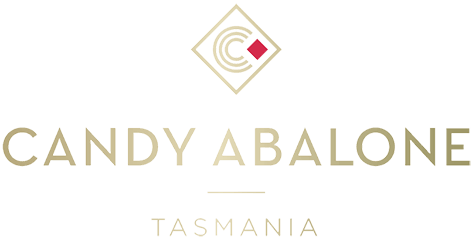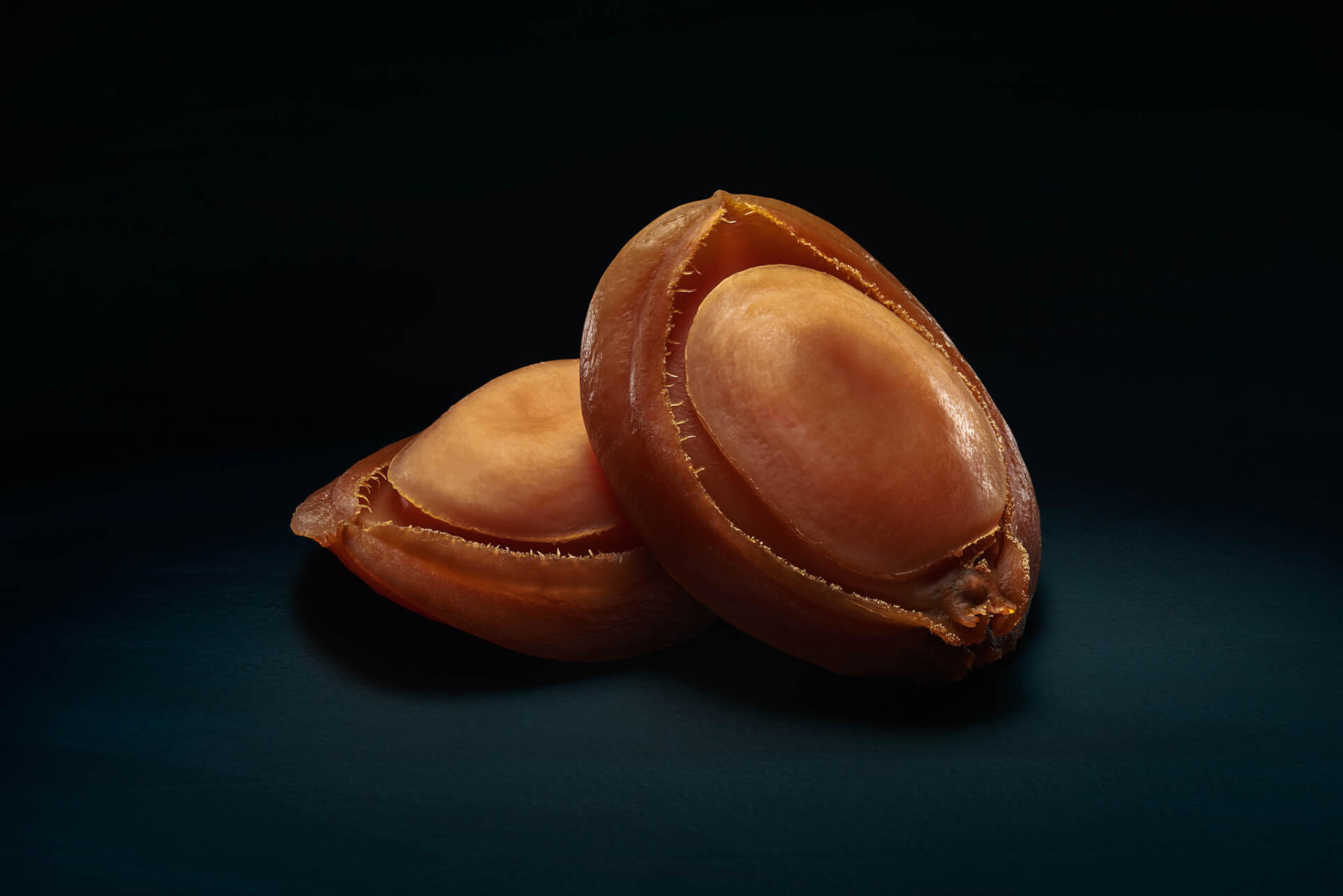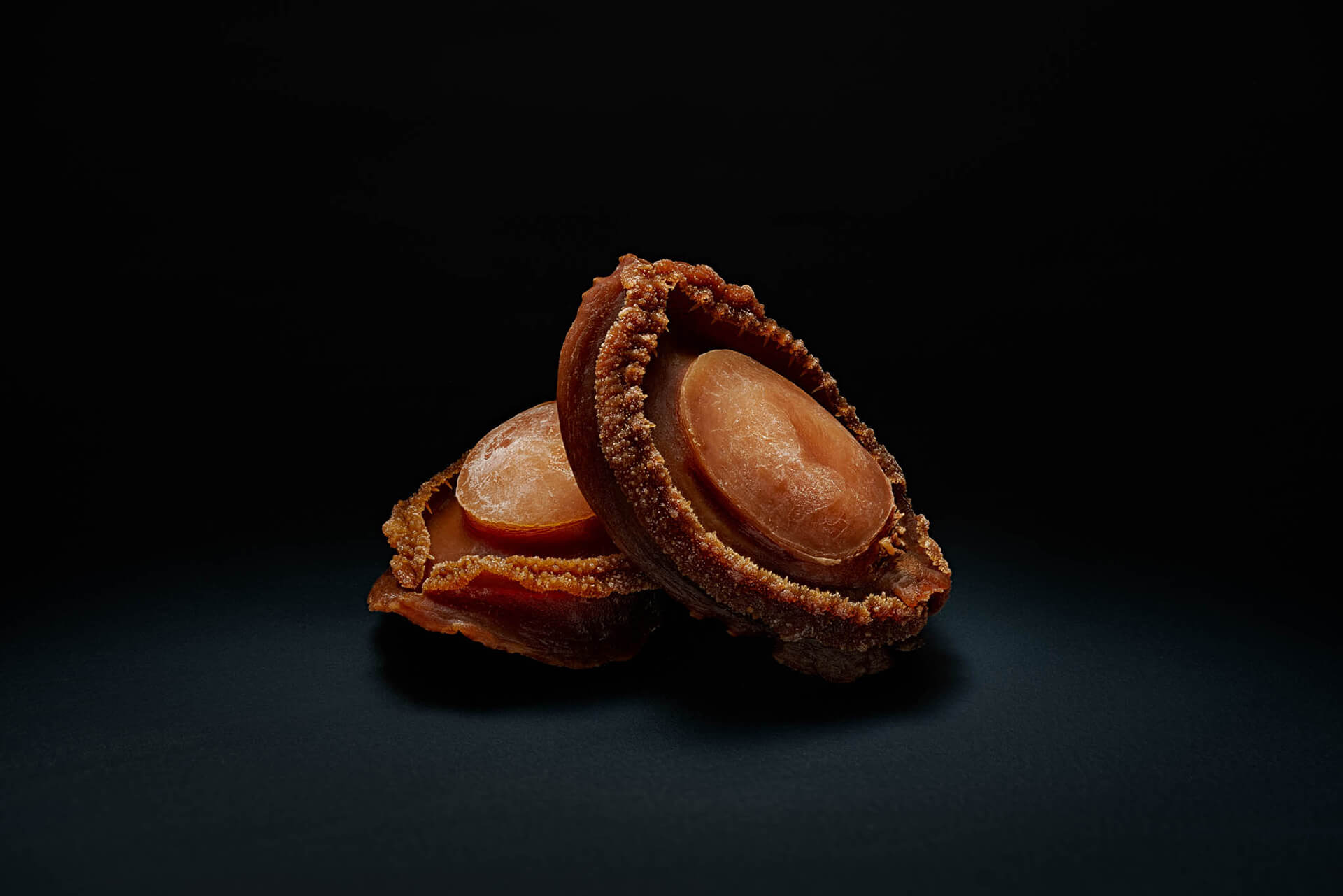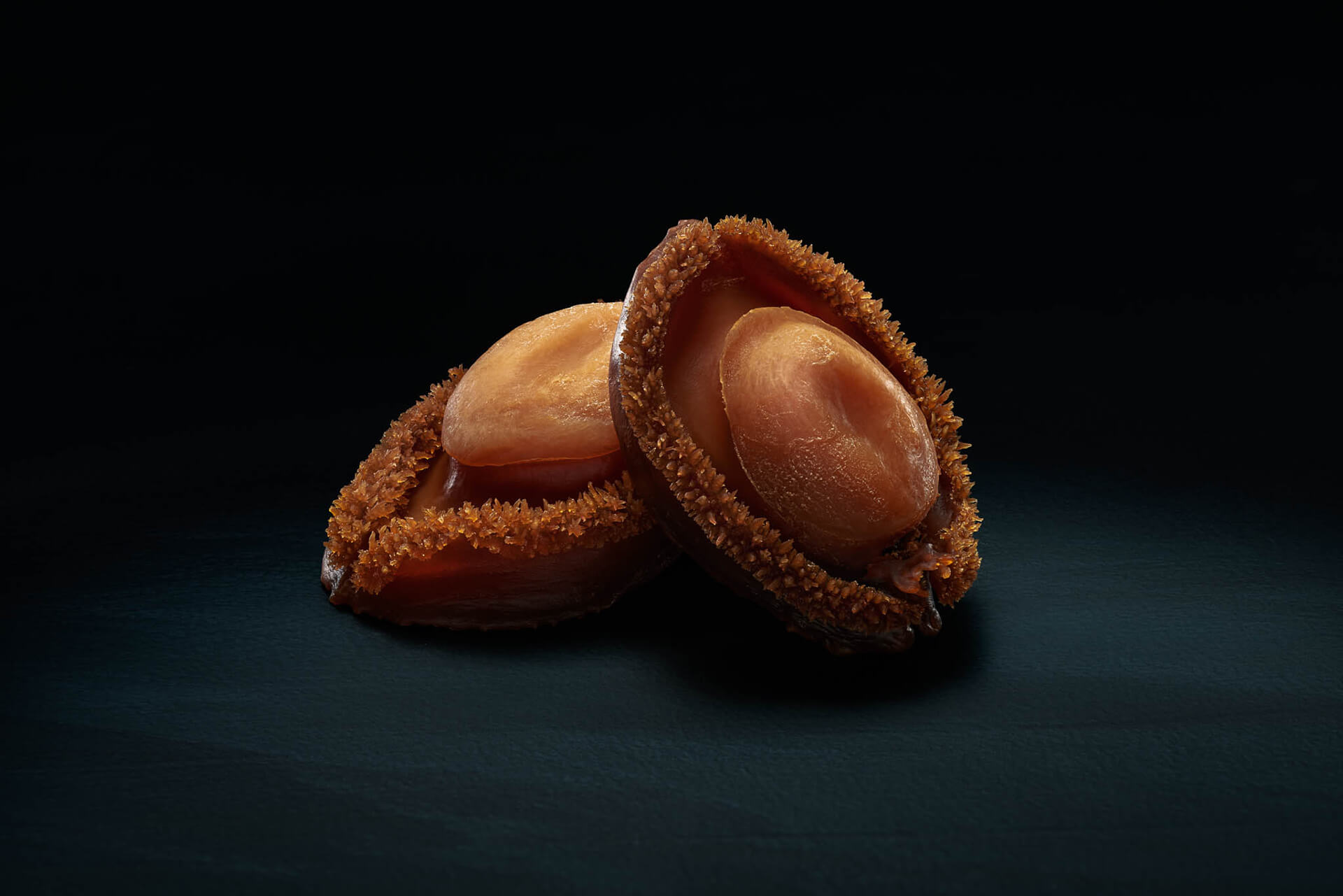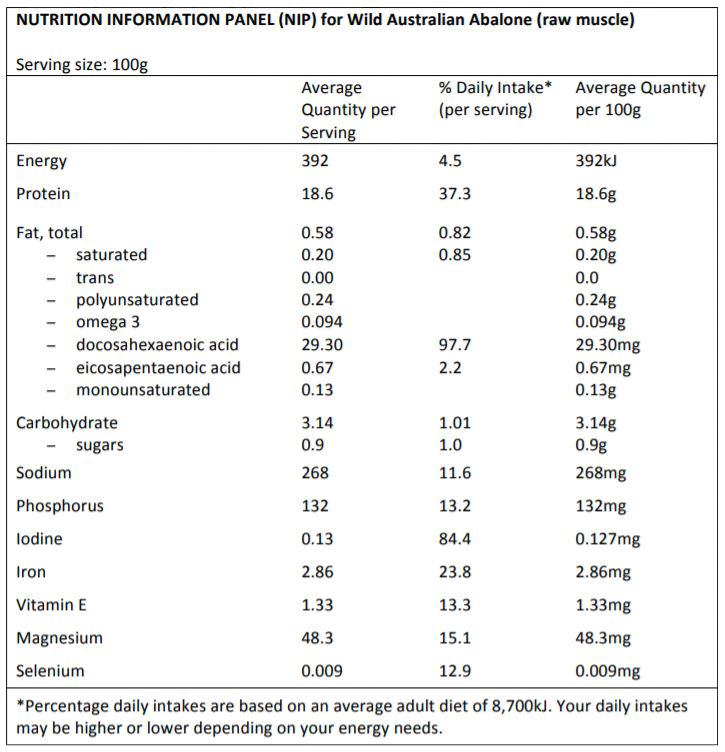Australian Abalone
Wild Caught Abalone
Some of the best wild caught abalone in the world is harvested from the cool, unpolluted waters of Australian southern coastlines. Harvesting of abalone in Australia is managed to ensure it is ecologically sustainable. About 50% of the total global supply of wild caught abalone is from Australian waters, and approximately half of that is from Tasmania. Wild abalone is harvested directly from the ocean floor with experienced Australian divers braving cold waters and sharks to hand select the finest quality abalone.
What is abalone?
Abalone is a marine snail that lives on reefs. They are a single-shelled (gastropod) herbivorous marine mollusc (Family Haliotidae). Over one hundred species exist worldwide. The body of the abalone is large and fleshy, with a broad, muscular foot that is used to attach itself to reefs or rocks using suction. It is this foot that is prized for eating. The rough, flat, oval shells of abalone have an opalescent mother-of-pearl interior, which also makes them popular as decorative items.
How big is abalone?
Retailed live abalone is usually about 250g-350g when fully grown, with the shell usually measuring 13-17cm. The size of abalone can however exceed 20cm in shell length and over 3kg in weight. The size variants for dried Greenlip, Blacklip and Brownlip abalone range from 20-150+g, depending on individually piece size.
How long does abalone live for in the wild?
The longevity of abalone in the wild is thought to be in the order of 40 to 50 years.
Which type of abalone is best?
Taste depends on a number of factors including the abalone species, size, what they eat and how the abalone are prepared. Bigger abalone generally have a firmer texture. Wild harvested abalone has a stronger sea taste and the taste between canned, dried, fresh, frozen and vacuum packed abalone are also very different.
How many types of abalone are there?
There are over one hundred species of abalone worldwide. There are 18 abalone species in Australian waters.
Is abalone an endangered species?
With the popularity of abalone worldwide soaring, this seafood delicacy has been overfished in many countries, and some species of abalone have been listed as endangered. The only abalone stocks that have not collapsed are in those harvested in Australia and New Zealand. There is a tightly monitored and controlled quota on Australian wild abalone to ensure its ecological sustainability.
Where does abalone come from?
Abalone live along the open coastlines of Australia, New Zealand, South Africa, Japan and the west coast of North America.
Is Australian abalone good?
Australian abalone is a nutritious choice for health-conscious consumers. The best abalone grows near the 40 degrees south latitude and this is why Australian wild-caught abalone is some of the best in the world. Australia’s abalone products also meet the strictest standards for quality, sustainability and safety. Australian abalone is hand-caught by divers causing no damage to the environment. One of the largest suppliers of abalone in the world, Australian abalone is popular in Japan, Hong Kong, China, Singapore, Taiwan, USA, Canada, and the EU and has a reputation for quality.
What is abalone called in countries other than Australia?
One type of abalone is New Zealand’s Paua. Abalone is also called Perlemoen in South Africa and Ormer in the United Kingdom. Due to the spiralled whorls and shape of Abalone shells it has been called ‘ear shells’ or ‘sea ears’ in many languages. In France it is called Ormeau, in Italy it is called Orecchia Marina, and in Spain it is called Oreja de Mer.
In Australia it is also sometimes referred to as Mutton Fish.
Is abalone good for your health?
There are a lot of nutritional benefits to eating abalone. Abalone is a great source of protein, iodine, iron, magnesium, selenium, vitamin E, Omega 3 and it is low in saturated fats. Abalone also contains no trans fat.
What does abalone taste like?
Abalone is described as naturally buttery and salty thanks to the salt water in which it lives. There is a chewiness to it, a bit like calamari, and texturally it is similar to scallop and squid. Greenlip Abalone also has a slightly stronger flavour than Blacklip Abalone.
How much is abalone in Australia?
Supply and demand affect the prices of abalone. There is a quota on Australian wild abalone to ensure its ecological sustainability. Abalone in Australia can retail for around AUD$100/kg.
Where can I buy abalone in Australia?
Australian abalone is not common in Australian fish markets due to its high value in export markets. However, Candy Abalone has a range of dried, live, frozen and canned Australian Greenlip, Blacklip and Brownlip abalone available for retail purchase, Australian restaurants and seafood distributors, and export to international markets.
How do I cook abalone?
You can eat abalone raw or cooked. Dried abalone is traditionally cooked by soaking and braising the abalone for several days and hours, to be enjoyed in traditional and modern cuisine.
Fresh abalone is best cooked very quickly over a high heat or slowly (6 hours or more) over a low heat. The meat absorbs flavours well and can be braised, steamed, poached, pan-fried, stir-fried, and barbecued. The firm texture of abalone also makes it suitable for Squid, Octopus or Cuttlefish recipes. Dried abalone is traditionally distilled in water for 4-7 days depending on size. It is then braised for 2 days continuously before serving with vegetables and sauce.
